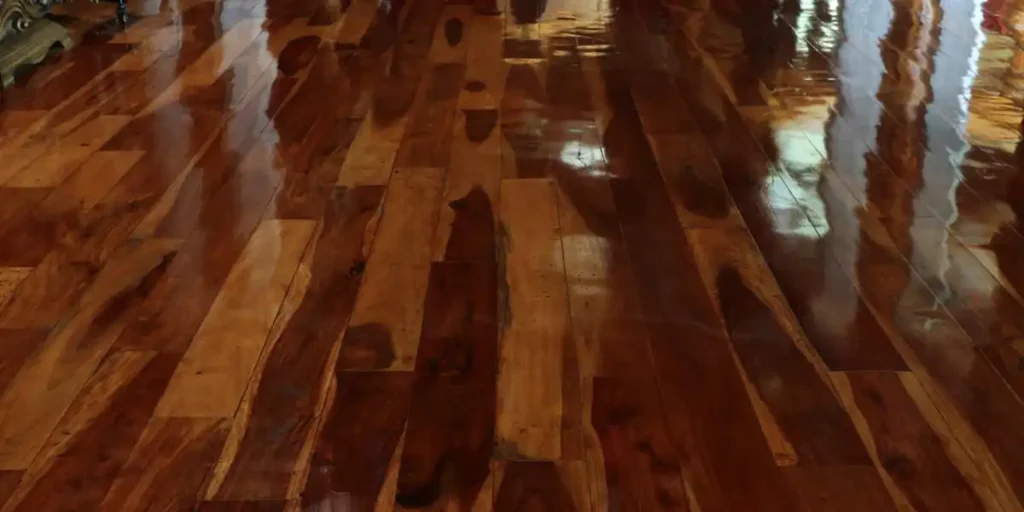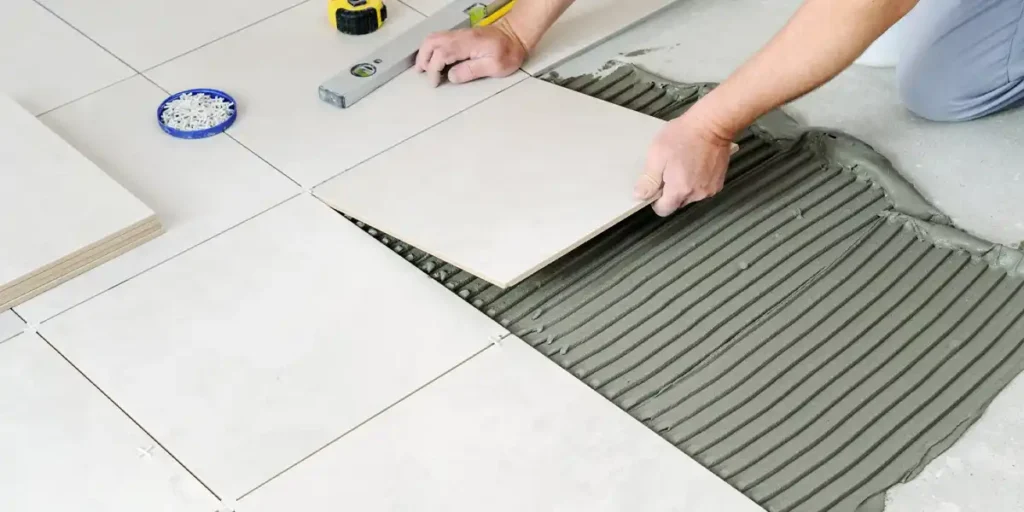Imagine walking into your home and seeing the perfect combination of tile and wood flooring each material enhancing the other while serving its purpose. Combining tile and wood flooring is a brilliant way to add character and functionality to your space.
However, executing this combination seamlessly requires attention to design, transitions, and functionality.
Here, we’ll guide you through strategies, styles, and solutions to help you master this trend with ease.
Defining Zones with Tile and Wood Flooring
Blending tile and wood flooring is about more than aesthetics, it’s about creating zones, improving functionality, and elevating the overall design.
Let’s explore some tried-and-true strategies to achieve this.
Using tile and wood to define zones within an open-plan layout is a design game-changer. Tile works perfectly in high-traffic or moisture-prone areas like kitchens and bathrooms, while wood adds warmth to living and dining spaces.
By transitioning from tile to wood, you not only delineate spaces but also create a visual flow that enhances the overall design.
Pro Tip: When defining zones, opt for complementary colors. For example, pair light oak wood with soft, neutral tiles to achieve balance.
Creating a Visual Transition with Area Rugs
If a bold transition isn’t your style, an area rug can provide a subtle bridge between tile and wood. Rugs soften the visual impact of two different materials meeting while adding texture and warmth. Choose a rug that incorporates colors from both the tile and wood to create harmony.
Design Tip: Go for a patterned rug in muted tones for modern spaces or a vintage piece to add character in traditional settings.
Using Border Tiles for a Polished Look
Adding border tiles where tile meets wood can frame the transition beautifully. This technique works well in formal dining rooms or entryways, creating a defined yet elegant boundary. Select border tiles that contrast slightly with both flooring materials to add depth without overwhelming the design.
Example: A black or dark grey border can provide a striking accent between white tile and light oak wood.
Strategic Placement for Functionality
Practicality plays a big role in combining tile and wood. Tile is durable and water-resistant, making it ideal for kitchens and bathrooms. Wood, on the other hand, is comfortable underfoot, perfect for cozy areas like bedrooms and living rooms.
Functional Design Tip: Use tile near entrances to trap dirt and moisture, and transition to wood further inside the home for a more inviting feel.
Choosing the Right Tiles and Wood for Your Project
The harmony of tile and wood depends heavily on your choice of materials. Matching tones, patterns, and finishes can make or break your design.
Color Coordination: Achieving Harmony
Stick to colors with complementary undertones. Neutral palettes work wonders—think beige tiles paired with warm honey-toned wood or cool grey tiles with ash wood.
Pro Tip: If you prefer bold colors, ensure the undertones of your tile and wood align. For example, pair blue-tinted tiles with light ash wood to maintain cohesion.
Texture Play: Adding Dimension
Contrasting textures can elevate your design. Pair glossy tiles with matte-finished wood for a dynamic look. Conversely, textured tiles like stone can add depth when paired with smooth, polished wood.
Style Idea: For rustic interiors, combine distressed wood with natural stone tiles to create an earthy, lived-in vibe.
Pattern Possibilities: Geometric Harmony
Geometric or patterned tiles can act as a feature element when combined with simple wood floors. This works particularly well in foyers or kitchens, where you want the tile to take center stage.
Tip: Avoid overly intricate patterns that may clash with the natural grain of wood. Balance is key.
Seamless Transitions: Making the Change Unnoticeable
Ensuring a smooth transition between tile and wood is essential for a cohesive design.
T-Molding or Reducer Strips
These functional additions bridge the height difference between tile and wood while providing a clean, professional look. Choose strips in a color that blends with either flooring material for a discreet finish.
Inlay Strips for a Sophisticated Touch
Inlay strips made of metal or contrasting wood can elevate the transition. These strips not only enhance the design but also make the transition more durable.
Design Tip: Use brass inlays for a touch of luxury in contemporary spaces or wood inlays for traditional styles.
Final Thoughts
Combining tile and wood flooring is a versatile and stylish solution that enhances both the functionality and beauty of your home.
With thoughtful planning, the right materials, and seamless transitions, you can achieve a cohesive and stunning look. Whether you prefer bold contrasts or subtle harmony, this design choice allows for endless creativity.
Ready to transform your home through tile flooring? Contact Cardenas Flooring today for expert guidance and professional tiling solutions!
FAQs
Is it challenging to combine tile and wood flooring?
Combining tile and wood flooring can be straightforward with proper planning and execution. The key is selecting materials with complementary colors, textures, and patterns. Use transitions like T-molding or inlay strips to ensure a smooth and polished look. For more intricate designs, professional help is recommended to achieve a seamless finish.
What are common mistakes when blending tile and wood flooring?
Common mistakes include choosing clashing colors or textures, neglecting transition pieces, and mismatching the flooring heights. Improper planning can result in an unbalanced look or uneven surfaces. To avoid these issues, carefully select materials, plan transitions, and consider the functional needs of each area.
Can I combine tile and wood flooring myself, or do I need a professional?
If you have experience with flooring installation, combining tile and wood can be a manageable DIY project. However, ensuring seamless transitions and preventing height mismatches often require professional expertise. A professional installer can ensure the materials align perfectly and the final result looks cohesive.
How much does it cost to combine tile and wood flooring?
The cost depends on materials and labor. High-quality wood and tile may range from $10-$30 per square foot, including installation. Additional expenses may include transition strips, subfloor preparation, or leveling. Get multiple quotes from professionals to find the best value for your project.
How do I maintain both tile and wood flooring in the same space?
Maintenance involves regular cleaning tailored to each material. Sweep both surfaces regularly to prevent dirt buildup. Use a damp mop for tiles and a wood-specific cleaner for hardwood. Avoid abrasive cleaning agents on both to maintain their finish. Place rugs in high-traffic areas to protect the flooring and prevent scratches.




